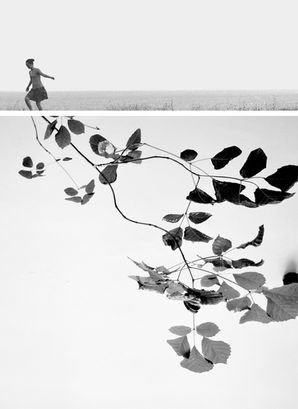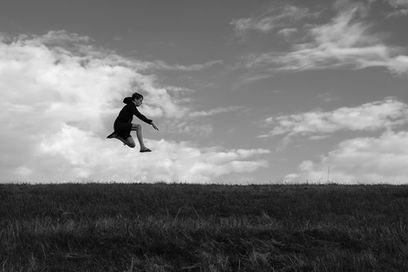
SOCIAL REVOLUTION
January 29, 2021
INTERVIEW
PHOTOGRAPHY Ruber Osoria
INTERVIEW Karin Svadlenak
Ruber Osoria is a Cuban photographer whose remarkable journey has taken him from the vibrant streets of Havana to his current home in the remote corner of southern Chile. Growing up in the countryside of Cuba, Ruber’s early love for photography was sparked by the stories he heard from his grandfather, who was a passionate photographer himself. With the help of his mobile phone, Ruber captured the everyday beauty of his rural home, allowing him to explore the world around him through a lens. It wasn’t until he arrived in Chile that he was lucky enough to get his hands on a used camera, and it was then that he was able to truly hone his craft. His work is now focused on documenting life in the streets and exploring the hidden stories within conflict. Through his lens, Ruber strives to bring attention to the misfortune of humanity, and shows us a unique perspective of what it means to be human.

“I started taking photos with an iPhone that an uncle who lives in the United States gave me during one of his trips to Cuba. I would go out with my rectangle in hand and isolate myself far between the embrace of palms and carob beans, I did not know that there was a photography movement and much less that it was considered an art. I just felt good, full, in the climax . And so my friends, artists who graduated from the academies of plastic arts, fell in love with my photography, to the point when I did my first exhibition in my town. Everything was very nice, I fell in love with that social recognition, which gave me my own identity, a unique and exclusive language, and there was the enormous task of learning and educating oneself, difficult for a peasant like me in a country without internet to even see a tutorial. But I had cinema and, most importantly, good friends.”
IN CONVERSATION WITH RUBER OSORIA
THE PICTORIAL LIST: Ruber, please tell us about yourself.
RUBER OSORIA: I was born in eastern Cuba, in a town of Taino heritage, which is subtly penetrated from the back by a wonderful river, which gives the name of Contramaestre to my beloved land, the land of the last mambí, and where the three greatest men in the history of Cuba, Cespedes, Marti and Fidel, washed their bodies in that river.
Son of a single, peasant mother, an example of feminism, my mother, without knowing what it was to be a feminist, lived in the town of Maffo, in a wooden house with earthen floor, and 70 percent of the food on our table was produced by my mother's hands, because instead of planting flowers and roses, she planted bananas, corn, beans, an infinite number of things.
TPL: How did you get to Chile, being Cuban? What are you doing there?
RO: I was born in eastern Cuba. I come from a humble family where the majority of its members, and Cubans in general, perceive the United States as a very civilized country with rich, sophisticated and noble people. It was the perfect destination to migrate to, even more so with all the benefits that we were able to obtain, thanks to the differences between Cuba and the USA, benefits such as the Cuban Adjustment Act or the Wet Feet Act. When those laws were eliminated, Cubans had to rethink a new direction to migrate to, first finding Chile, the paradise of neoliberalism in Latin America.
In 2018 I made the decision to migrate to Chile in search of a good job, with the aim of buying my first camera and continuing with this passion that continued to grow every day. I went through 4 countries in less than a month.
I was a victim of human trafficking, thirst, hunger and fear. Being in the hands of traffickers, anything unexpected could happen. I finally arrived in Chile as an undocumented migrant. I had never imagined living in Chile, much less working there. It was an impossible dream for a young man like me. Before arriving in Chile, apart from soccer, Neruda's poems, and some emblematic places like the Atacama Desert, I did not know anything about this country.
With the money I earned from the first illegal jobs I did, I bought a second-hand camera. It was a Sony A58, my first camera with the kit lenses. Months later it happened that I had to live through a social revolution, so I took a series of photographs entitled *"Chile the other earthquake".
*Read THE OTHER EARTHQUAKE through the link at the end of interview.
TPL: Where do you find your inspiration?
RO: I find my inspiration in literature, in audiobooks, and reviewing a lot of work by other photographers and photography groups.
TPL: Do you have any favourite artists or photographers you would like to share with us, and the reason for their significance?
RO: My favourite photographers are Sergio Larrain, Raúl Cañibano, and Sel Sagama.
Sel Sagama is a photographer and friend who has changed the way I look and do my work. He has changed my style by 95%, in terms of the technical as well as the subjective and creative aspects.
I photograph with an authorial look and with a message behind it, there is already a working table, it is no longer taking photos just for the sake of taking photos.

TPL: Do you have a favourite place to take pictures?
RO: The street, conflict, misfortune are my favourite places. But my special place to take photos is the theatre. It is a challenge, it is composing on top of a composition.
TPL: With what type of equipment do you do your photographic work? Do you think equipment is important to achieve your vision in your photography?
RO: I do my photographic work with a second-hand Sony alpha 58 with the kit lenses, which I bought with months of savings.
If I believe that the instrument is a driving motor of a photographer, not in the vision as such, but I believe it is a bridge, where the unreal and the subjective become palpable and solid, such as photography is.
TPL: Besides photography, do you have an artistic background?
RO: Before discovering this beautiful sensitivity for photography, I was dedicated to the Moorish art of the tablas (a type of drum), and I was the vocalist of a small punk band in my town, also performing for the radio.
TPL: Is there a special project you are currently working on and would like to inform us about?
RO: I am working on a documentary project about the arrival of baseball in the south central region of Chile, as well as the influence of migrant foreigners in this area. Hopefully I can publish a book.
TPL: "When I'm not out taking photos, I (would like)...
RO: To be a good lover, a good father, a good companion and to fight the patriarchy.

Ruber Osoria's story is a testament to the power of passion and determination. His journey from rural Cuba to distant Chile is an incredible one, and his photographs of the streets and conflicts he encountered along the way are an invaluable reminder of the complexity of life. We can all learn from Ruber's example and use our own talents and interests to pursue our dreams and make a difference in this world. We invite you to join us in supporting and celebrating Ruber's work, as he continues to explore the world through his lens and capture the hidden stories of humanity.

































